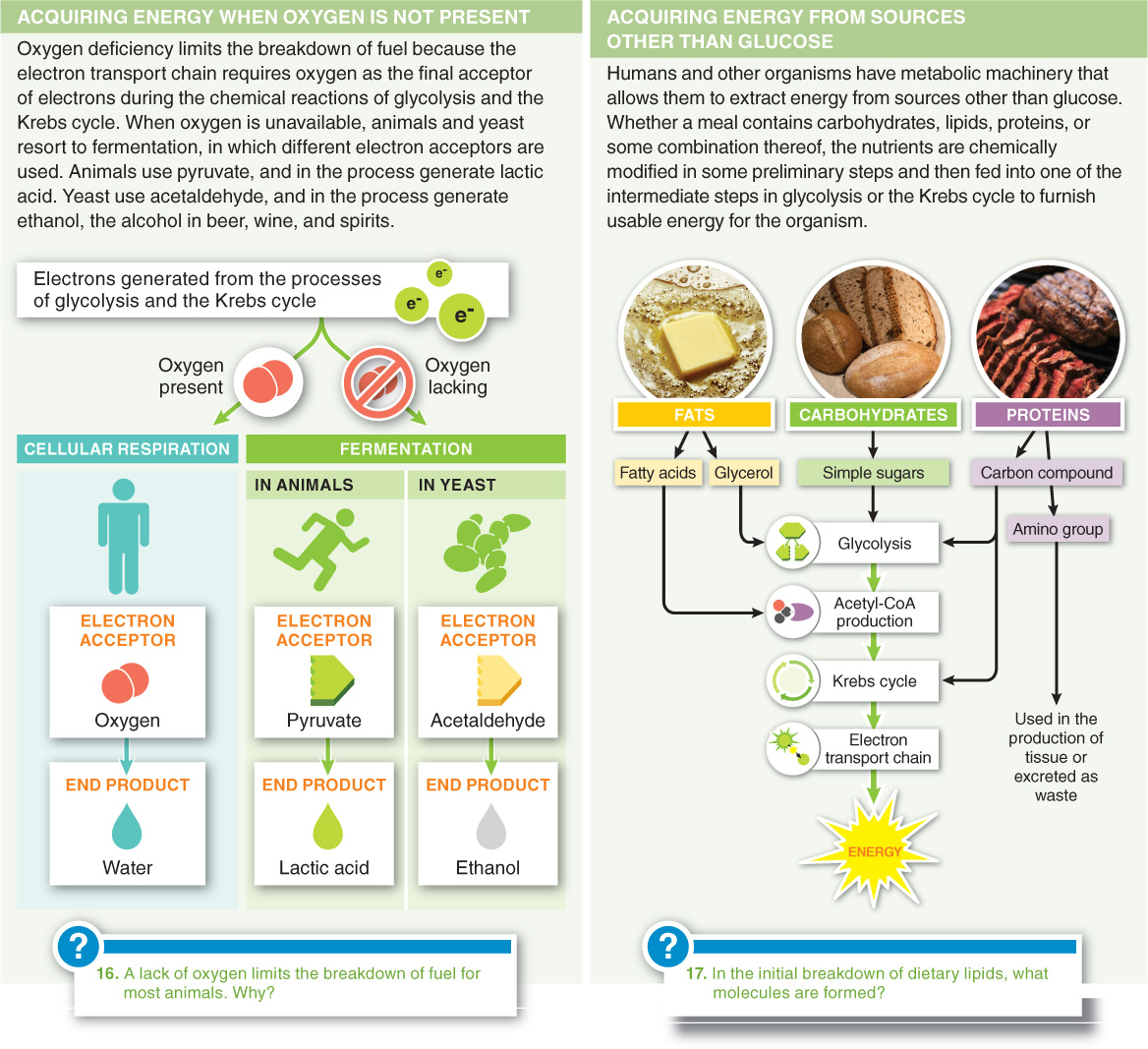4.17–4.18
4.17–There are alternative pathways to energy acquisition
Organisms can generate ATP when oxygen is lacking or when organic molecules other than glucose, such as lipids, proteins, and polysaccharides, are consumed.

Q
Which of the following energy-
- a) the Krebs cycle
- b) glycolysis
- c) combustion
- d) photosynthesis
- e) None of the above. There are no energy-
generating processes that occur in all living organisms.

During the Krebs cycle:
- a) the products of glycolysis are further broken down, generating additional ATP and the high-
energy electron carrier NADH. - b) high-
energy electron carriers pass their energy to molecules of sugar, which store the electrons as potential energy. - c) the products of glycolysis are broken down, generating ATP and ethanol.
- d) cellular respiration can continue even in the absence of oxygen.
- e) the products of glycolysis are converted to acetyl-
CoA.

All alcoholic beverages are produced as the result of:
- a) cellular respiration by bacteria that occurs in the absence of oxygen.
- b) cellular respiration by bacteria that occurs in the absence of free electrons.
- c) cellular respiration by yeast that occurs in the absence of free electrons.
- d) cellular respiration that occurs in the absence of sugar.
- e) cellular respiration by yeast that occurs in the absence of oxygen.

In harvesting the chemical energy of the molecules in food:
- a) all macromolecules must first be converted to glucose.
- b) all macromolecules must first be converted to hydrocarbon chains.
- c) all macromolecules must first be converted to simple sugars.
- d) organisms can use sugars, lipids, and proteins.
- e) all macromolecules must first be converted to free-
form amino acids.
